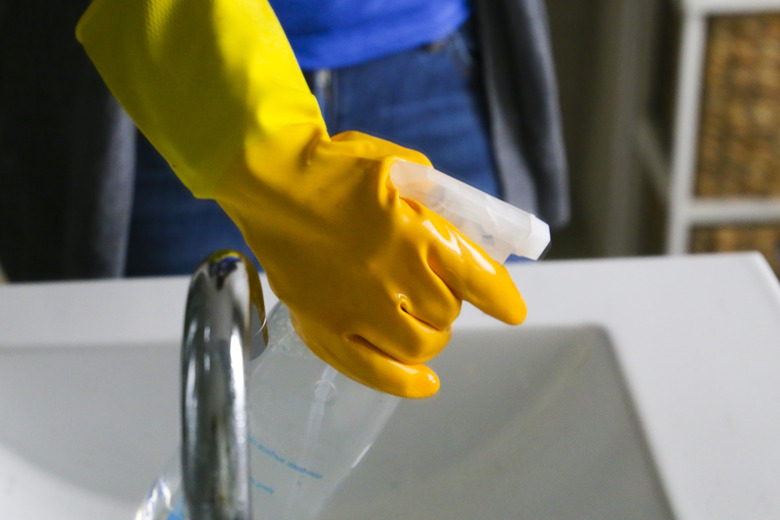How To Remove Mold From Bathroom Sealant
We may receive a commission on purchases made from links.
Your household's bathroom offers prime conditions for mold and mildew to grow, thanks to warm, damp conditions. Over time, one area that can become particularly prone to growing mold is your bathroom sealant. This is unsightly and makes your tub look uninviting, but it can sometimes be dangerous too. Knowing how to remove mold from your bathroom sealant and prevent it from coming back will help keep your bathroom looking fresher.
What's Bathroom Sealant?
What's Bathroom Sealant?
A sealant is the product used to cover gaps between your bathroom fixtures and the surrounding walls, keeping the area watertight. You might use the terms caulk and sealant interchangeably, but they're actually different (albeit similar) products.
Caulk tends to dry into a harder, more rigid substance, whereas sealants, often made with silicone, offer more in terms of elasticity. This means sealants are more commonly used in areas that experience temperature changes such as around a bathtub.
Removing Mold From Bathroom Sealants
Removing Mold From Bathroom Sealants
When treating bathroom mold, you must take safety precautions. You should ventilate the room properly and wear the correct safety equipment in case of airborne mold spores. This includes wearing a respirator mask, goggles and gloves whenever you're interacting with bathroom mold.
There are two main methods for removing mold from silicone sealant. If you prefer to try out a natural method first, you can use white vinegar in a spray bottle. Liberally apply this to the moldy areas of your sealant. Let the vinegar sit for a couple of hours; then scrub the area fully and follow up by rinsing thoroughly with water.
If the mold stains are stubborn, try baking soda and vinegar. Simply mix enough vinegar with baking soda to form a paste. Apply this paste to the stains, allow it to dry and then remove it with a damp cloth. You can repeat this process for any more-stubborn mold staining.
If you've tried out the more natural methods to no avail, it may be worth going in with a more intense cleaning product. You can use a commercial mold remover or a mixture of 1 part bleach to 2 parts water. Apply to the sealant — you should be able to see when the mold has been removed. Once you're happy with the results, rinse it clean.
There are some instances where your bathroom sealant may just need to be replaced. Moldy sealant may not be as watertight and could cause damage to your bathroom. You can reapply sealant in your bathroom, but make sure to follow the safety precautions recommended on the product packaging.
Preventing Bathroom Sealant Mold
Preventing Bathroom Sealant Mold
Once you've removed the mold from your sealant, you'll want to make sure it doesn't come back. Mold grows best in warm, damp environments, so keeping your sealant clean and dry can help prevent mold. Make sure you dry your tub or shower after use with a squeegee or towel.
Keeping the humidity in your bathroom at a low level can also help stop mold growth. Open a door or window after showering and consider installing an exhaust fan to keep the room as well ventilated as possible. It's also a good idea to remove any damp towels from the bathroom and allow them to dry out elsewhere to keep the moisture levels low.
